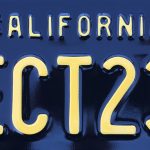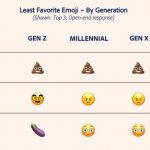Anti-Circumvention Takedowns Aren’t Covered by 512(f)–Yout v. RIAA
[I’ll blog the Supreme Court’s cert grant in Gonzalez v. Google probably later this week.] Yout’s software allows users to rip digital streams, such as from YouTube. It sought a declaratory judgment that it did not violate 17 USC 1201(a)(1)…

Muslim Loses Case Against Facebook Over Discriminatory Content Moderation–Elansari v. Meta
Elansari is Muslim. This is not his first time as a plaintiff. In this lawsuit, he claims that Facebook blocks pro-Palestinian publishers and favors pro-Israeli publishers. Thus, he argues, Jewish readers are more likely to get the information they want…

When Do Defendants Have Access to Copyrighted Works Posted to the Internet?–Cooley v. Target Corp.
This case relates to Target’s “Cat & Jack” clothing line. The plaintiff, NOC, is a teenager who has copyrighted designs in hand-drawn dots that Target allegedly copied in the clothing line. Target and NOC had some direct dealings, including bringing…

Another Example of How “Notice and Explanations” Requirements are a Liability Trap–Shared v. Facebook
Shared.com is a content producer. It ran Facebook self-service ads and participated in Facebook’s “instant articles” program that let Facebook embed ads in its content in exchange for a revenue cut. Starting in 2018, Shared “lost access” to the instant…
Photo Licensing Service Qualifies for DMCA Online Safe Harbor–Steinmetz v. ShutterStock
This is a 512(c) online copyright safe harbor case. We rarely see opinions like this any more. In 2022, I’ve blogged just one other 512(c) case (Davis v. Pinterest). (Business Casual v. YouTube should have been a 512(c) case, but…

A 3 Month Check-In on the Copyright Claims Board (CCB)
On September 19, I gathered some CCB stats. This was 95 days after launch. 155 claims had been filed as of that date. (Today, the number is 157). That implies an annual run rate of less than 600 claims. Every…

The 5th Circuit Puts the 1st Amendment in a Blender & Whips Up a Terrible #MAGA Kool-Aid–NetChoice v. Paxton
[This is a 6k+ word blog post that was joyless to write and most likely will be joyless to read.] If you want a distillation of this decision, consider this line: “Far from justifying pre-enforcement facial invalidation, the Platforms’ obsession…

Comments on Adobe’s 2022 Emoji Usage Trends Survey
[The Internet you know and love is on life support after an awful NetChoice v. Paxton Fifth Circuit opinion and the enactment of two California laws, AB 2273 and AB 587. I’ve written so much about those bills that I…

Five Ways That the California Age-Appropriate Design Code (AADC/AB 2273) Is Radical Policy
When a proposed new law is sold as “protecting kids online,” regulators and commenters often accept the sponsors’ claims uncritically (because…kids). This is unfortunate because those bills can harbor ill-advised policy ideas. The California Age-Appropriate Design Code (AADC / AB2273,…

Some Memes About California’s Age-Appropriate Design Code (AB 2273)
Today, I’m continuing my coverage of CA AADC (AB 2273) with a few memes on the subject: * * * * * * * * * My caption: “CAPTCHA vendors are training their age assurance algorithms for CA’s Age Appropriate…
